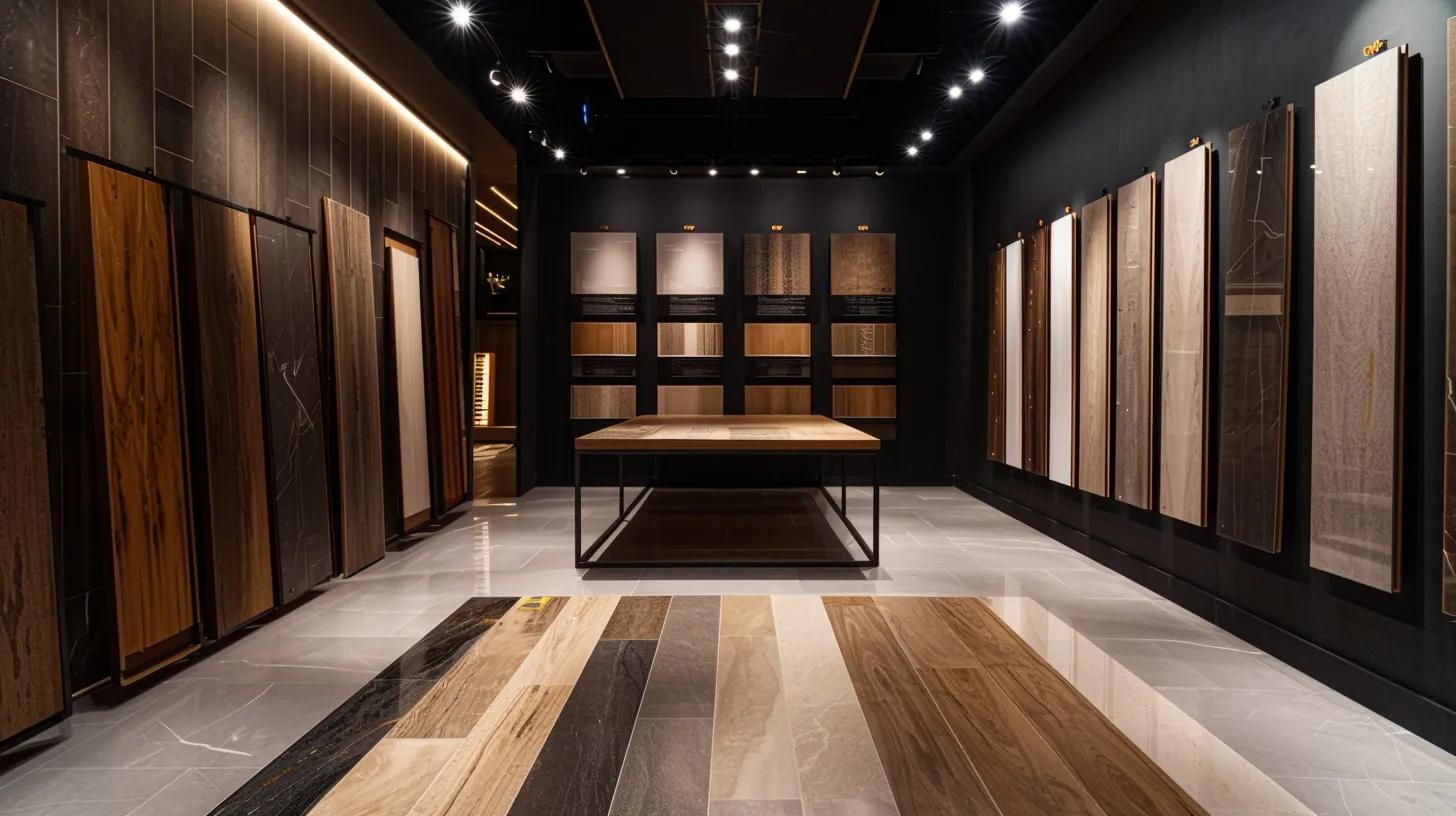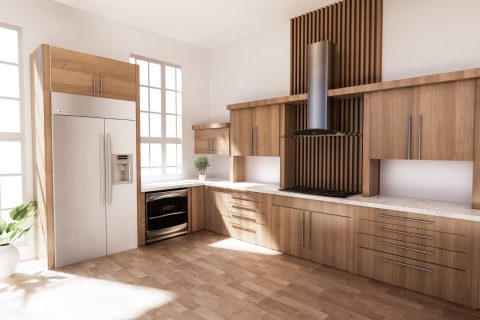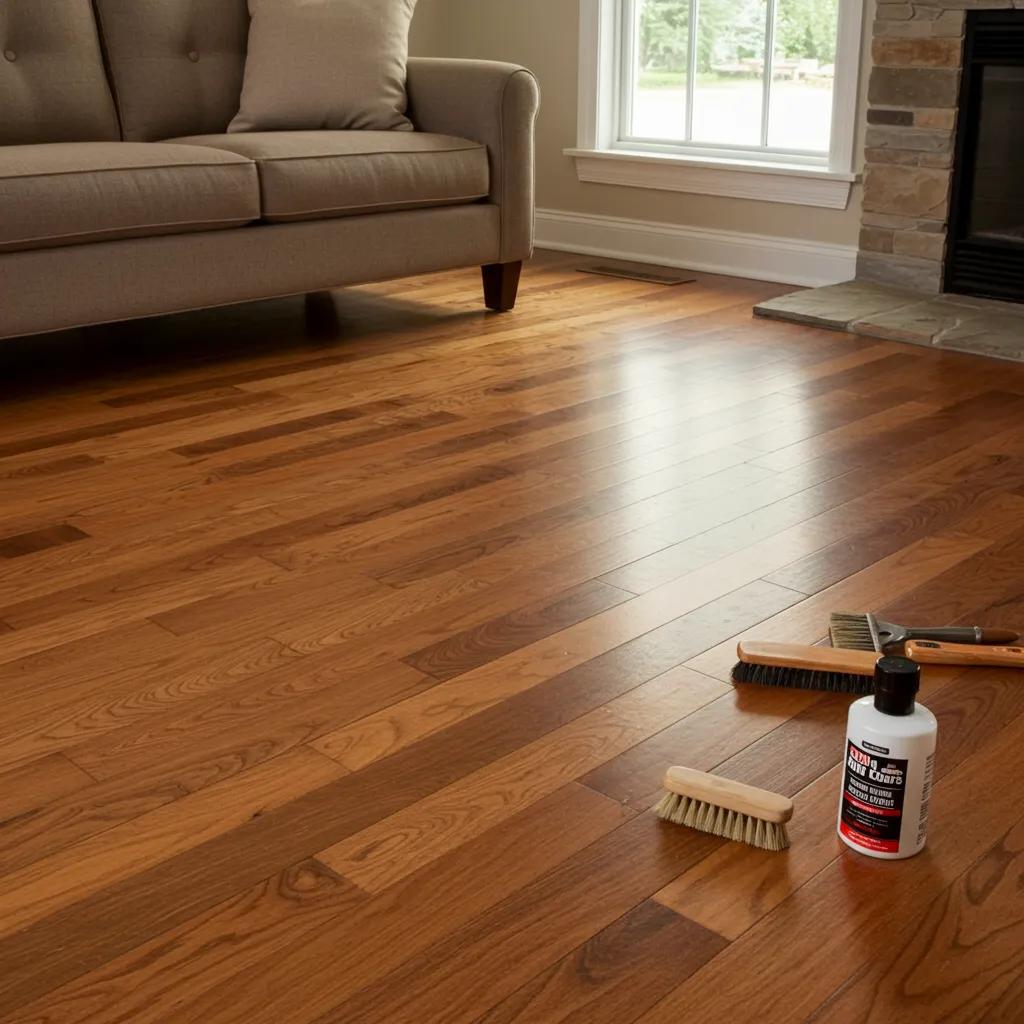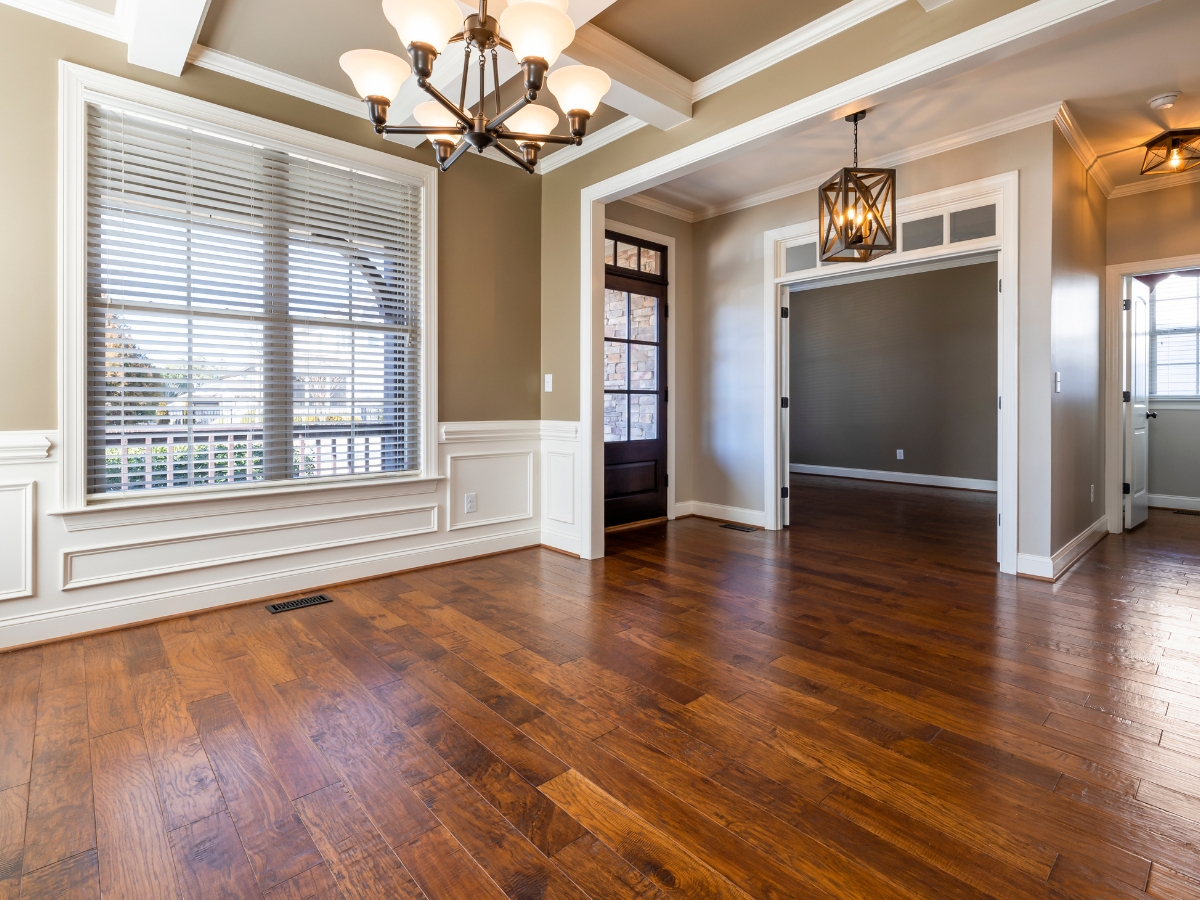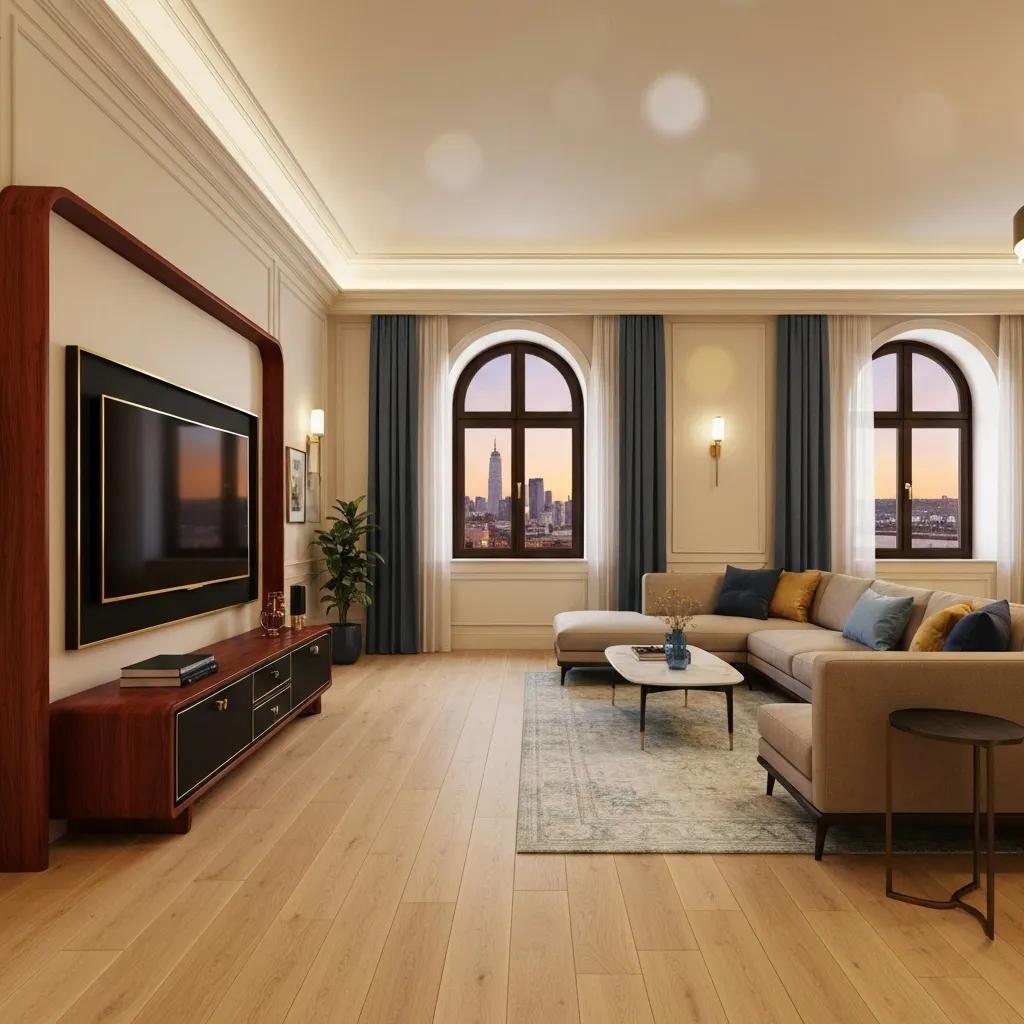For homeowners in Cumming, choosing the right flooring means balancing style, comfort, and durability—especially when it comes to moisture-prone areas like kitchens, bathrooms, and basements. Waterproof flooring has quickly become a go-to solution, offering protection against spills, humidity, and everyday wear without sacrificing visual appeal. Whether you’re renovating a family home or updating a rental property, understanding the latest waterproof options—like luxury vinyl plank, tile, or engineered hardwood—can help you make a smart, lasting investment. In this guide, we’ll break down what you need to know to choose the best waterproof flooring for your Cumming home.
Waterproof Flooring Options for Cumming Homes That Last
What Are the Best Waterproof Flooring Materials for Cumming Homes?
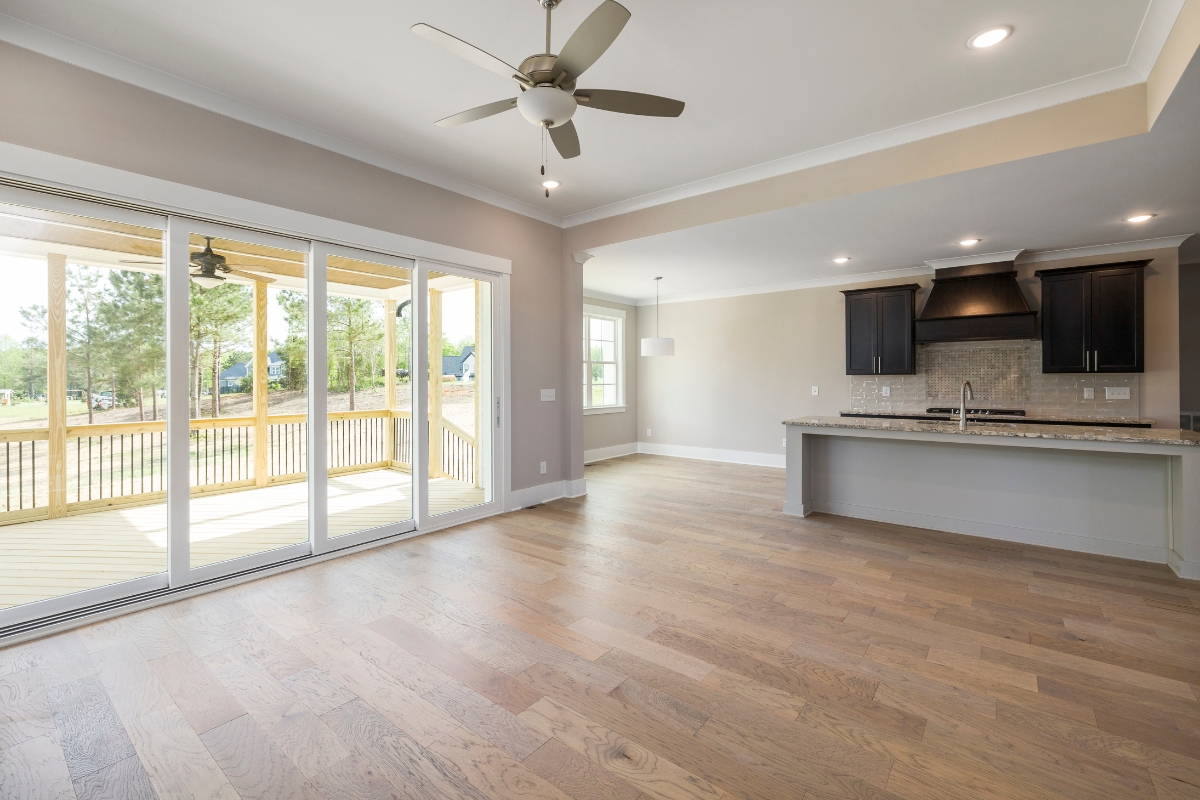
Homeowners in Cumming face humidity, temperature swings, and the occasional spill. Choosing a flooring material that stands up to moisture while looking good and lasting a long time is essential. Waterproof flooring options resist water absorption, maintain their structure under wet conditions, and offer a variety of styles to fit any décor. From living areas that see heavy foot traffic to laundry rooms and mudrooms, selecting the right material can protect your home and make maintenance easier.
Why Luxury Vinyl Plank (LVP) Works Well
Luxury vinyl plank flooring features a multi-layer design with a durable wear layer on top and a fully waterproof core beneath. This structure keeps moisture from seeping through to the subfloor, so spills and wet shoes pose little risk. Many LVP products recreate the look of hardwood or stone at a fraction of the cost, complete with realistic grain patterns and textures. Installation typically uses a click-lock system that snaps the planks together tightly, reducing gaps where water could gather. With its scratch resistance, stain resistance, and simple upkeep, LVP has become a go-to choice for busy Cumming homes.
Comparing Waterproof Laminate for Everyday Living
Modern waterproof laminate flooring improves on classic laminate by adding water-repellent coatings and resin-infused cores that resist warping and swelling. These enhancements make it more stable in kitchens, hallways, and other spaces where moisture might occur. Laminate offers authentic wood visuals and comes in a range of finishes, from light oak to deep hickory. It typically costs less than natural hardwood while meeting indoor air quality standards. Laminate panels lock together much like vinyl planks, forming a tight surface that keeps water out. For homeowners who need a budget-friendly floor that still performs under wet conditions, waterproof laminate delivers on both style and practicality.
Ceramic and Porcelain Tile for High-Moisture Areas
When water exposure is constant, such as in bathrooms and laundry rooms, ceramic or porcelain tile provides a rock-solid solution. Naturally non-porous, these tiles resist moisture from below and above, especially when installed with quality grout and sealant. They are available in every shade, size, and pattern imaginable, allowing for both classic and modern looks. Tiles work well with underfloor heating systems, creating a cozy surface even on chilly mornings. With proper installation techniques, a tiled floor can last for decades without water-related damage, making it a reliable long-term investment.
Benefits of Sheet Vinyl in Wet Zones
Sheet vinyl flooring arrives in large, seamless rolls that cover an entire room with no more than one or two cuts. Fewer seams mean fewer places for water to penetrate, which is why sheet vinyl excels in bathrooms, entryways, and kitchens. Modern designs mimic wood, stone, and tile, offering rich color variation and texture. The continuous sheet also simplifies cleaning—dirt and spills can be wiped away quickly without trapping debris in joints. Sheet vinyl resists dents, scratches, and stains, making it a low-maintenance option for households with kids or pets. Its flexibility and water resistance help it conform to uneven surfaces while protecting subfloors from moisture damage.
How Does Waterproof Flooring Protect Against Water Damage and Mold?
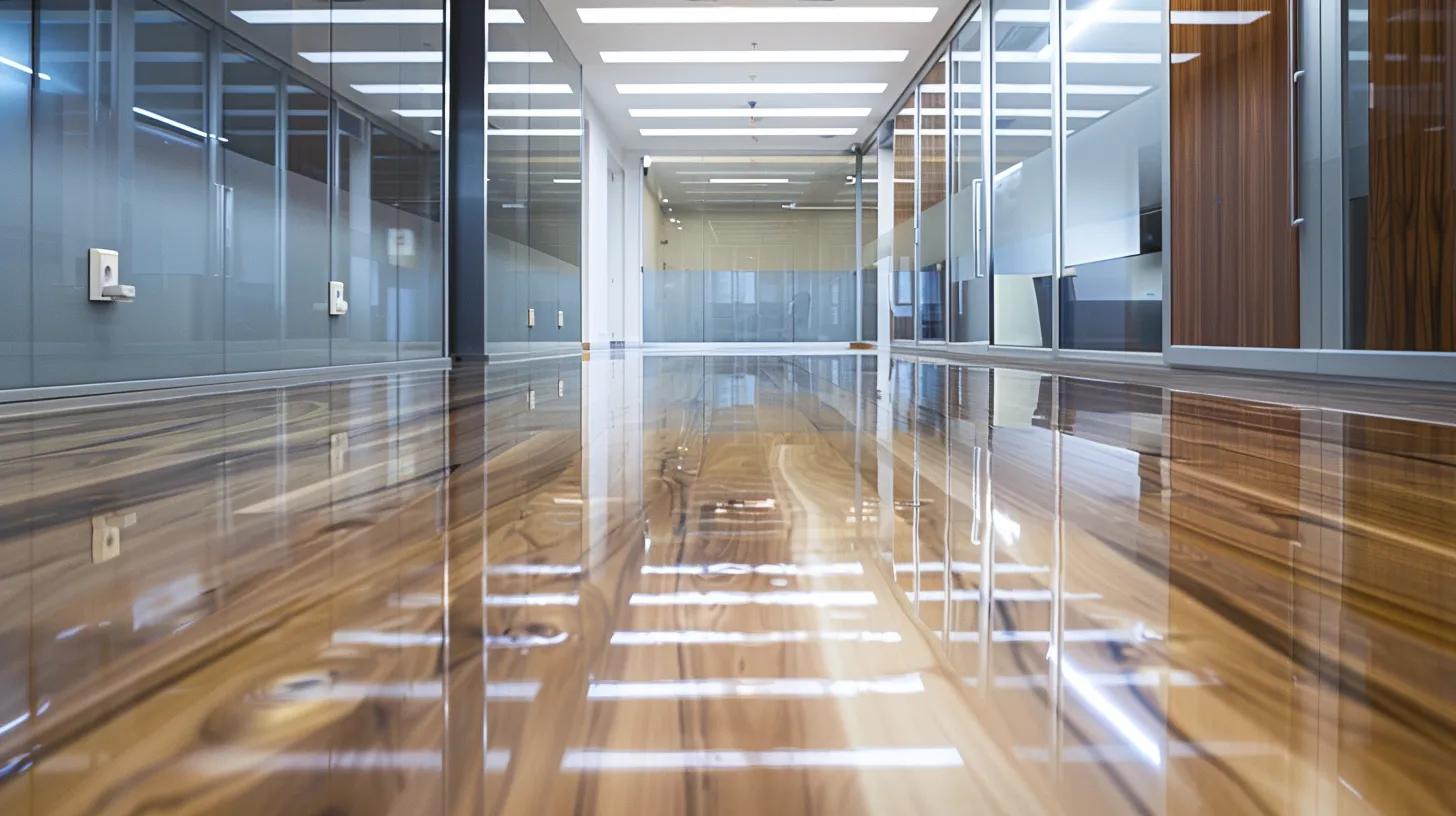
Waterproof flooring serves as a solid barrier that prevents moisture from reaching the subfloor. When water—whether from spills, leaks, or routine cleaning—stays on the surface, the risk of structural damage is greatly reduced. Since moisture cannot seep below the flooring, there is no opportunity for wood rot, swelling, or decay. By keeping the subfloor dry, waterproof materials also help preserve joists and underlayment, extending the life of your home’s foundation. This kind of protection is especially important in areas prone to humidity or sudden temperature shifts, where frequent condensation can otherwise lead to hidden water damage and costly repairs.
What Makes Flooring Waterproof and Resistant to Mold and Mildew
Modern waterproof floors rely on specialized manufacturing processes and materials that repel water and block microbial growth. Luxury vinyl plank and waterproof laminate feature cores made from water-resistant polymers that stay intact even after prolonged exposure. Ceramic and porcelain tiles use glaze and sealant layers that prevent moisture penetration through grout lines. In addition, many products incorporate built-in antimicrobial agents that slow or stop mold and mildew from taking hold on the surface. These treatments keep floors looking fresh and clean while protecting indoor air quality. Unlike traditional hardwood or basic laminate, these options stand up to regular wet conditions without warping, staining, or breaking down.
How Proper Installation Prevents Water Damage
The effectiveness of waterproof flooring depends as much on proper installation as on material performance. Preparing the subfloor is the first step: installers repair cracks, level uneven spots, and often lay down a moisture barrier to block vapor from below. Flooring planks and tiles then snap or lock together in ways that minimize gaps, and professional installers apply high-quality sealants in seams and edges to reinforce the water barrier. Adhesives and grouts designed for waterproof systems are used to secure tiles and vinyl sheets, creating a continuous, flat surface with no weak points. These precautions make it far less likely that water will slip beneath the finished floor, protecting your investment and preventing hidden damage.
Common Water Damage Risks in Cumming Homes
Homeowners in Cumming face several moisture challenges, from plumbing leaks under sinks to high humidity levels that lead to condensation on windows and walls. Bathrooms, laundry rooms, and basements are the most vulnerable spots, since they see the most direct water exposure. Aging roofs or poorly sealed windows can allow rain or melting snow to seep inside, creating damp patches that go unnoticed until mold emerges.
Even everyday activities—like carrying a wet mop across the kitchen—can introduce moisture along transition strips and thresholds. Recognizing these risks is the first step toward choosing flooring systems that provide dependable protection. With waterproof flooring in place, there’s far less chance that routine spills or minor humidity spikes will turn into major repairs and mold remediation.
How Much Does Waterproof Flooring Cost for Cumming Homeowners?
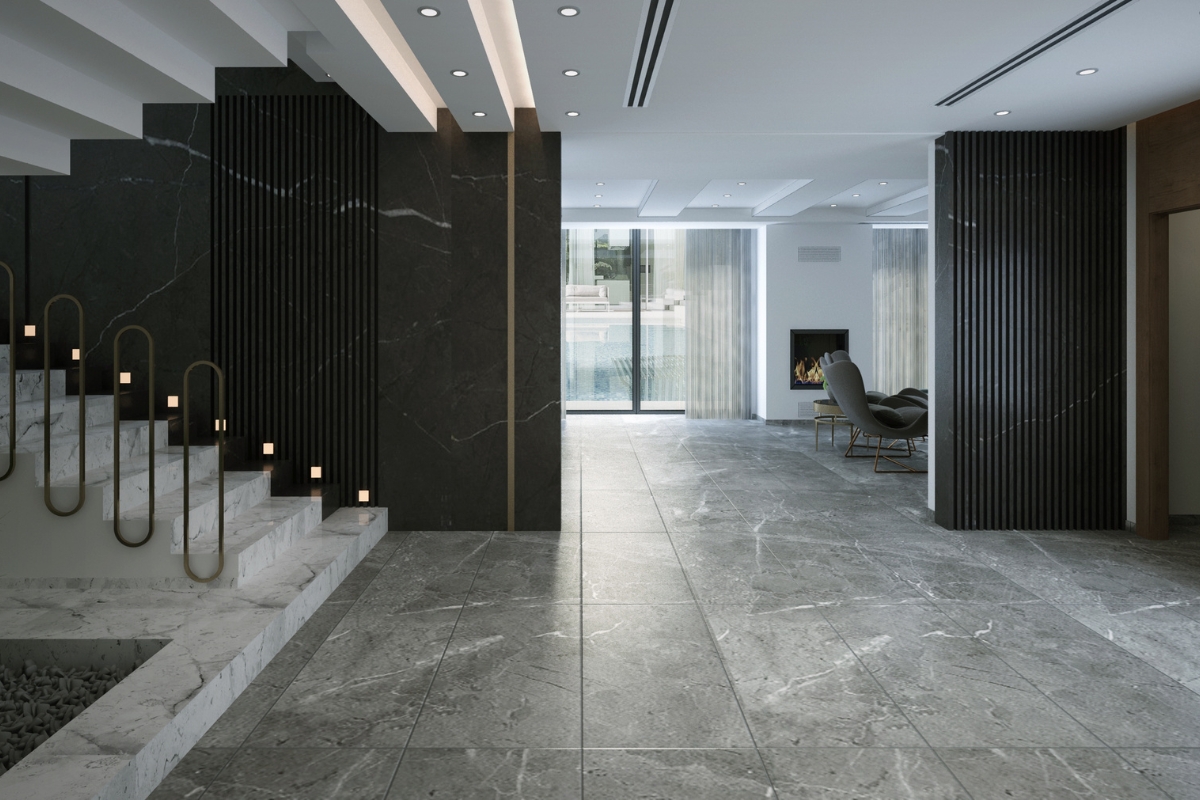
Choosing waterproof flooring means balancing upfront investment with lasting benefits like lower maintenance needs and fewer repairs. In Cumming’s varying climate, floors that resist moisture can protect against damage and save money over time. Before committing, homeowners should consider both material and installation costs to get a clear picture of the total expense.
Typical Price Ranges for Waterproof Flooring
Luxury vinyl plank flooring generally falls between two and five dollars per square foot, depending on factors such as wear-layer thickness and design detail. Waterproof laminate carries a slightly higher price tag in some cases, with most products ranging from two and a half to six dollars per square foot based on brand reputation and core construction. Ceramic and porcelain tiles tend to be pricier—four to ten dollars per square foot is common, reflecting the cost of higher-grade glazes and durable bodies. For larger rooms, sheet vinyl often proves the most budget-friendly option at around one and a half to four dollars per square foot, with variations tied to pattern complexity and rolling width.
How Installation Influences Overall Expense
Installation adds a significant layer to the final cost, since subfloor preparation and precise fitting are critical to guarantee waterproof performance. Contractors in Cumming typically charge between one and a half and four dollars per square foot for labor. This range covers tasks like removing old flooring, repairing or leveling the subfloor, laying underlayment or vapor barriers, and applying adhesives or grout formulated for waterproof systems. Experienced installers help avoid defects such as uneven seams or loose planks, which can lead to water intrusion. When homeowners pair waterproof flooring with underfloor heating, professional installation ensures proper spacing around heating elements, preventing warping and maximizing energy efficiency.
Long-Term Savings With Waterproof Flooring
While some waterproof materials cost more upfront than traditional options, they often deliver savings over the years. Their resistance to moisture prevents costly repairs from rot or mold, and durable surfaces stand up to heavy foot traffic without frequent replacement. Waterproof floors can also improve indoor air quality by limiting mold growth, potentially reducing health-related expenses. In addition, many buyers view moisture-resistant floors as a valuable feature, boosting resale appeal and allowing homeowners to recoup part of their investment when selling.
What Is the Installation Process for Waterproof Flooring in Cumming Homes?
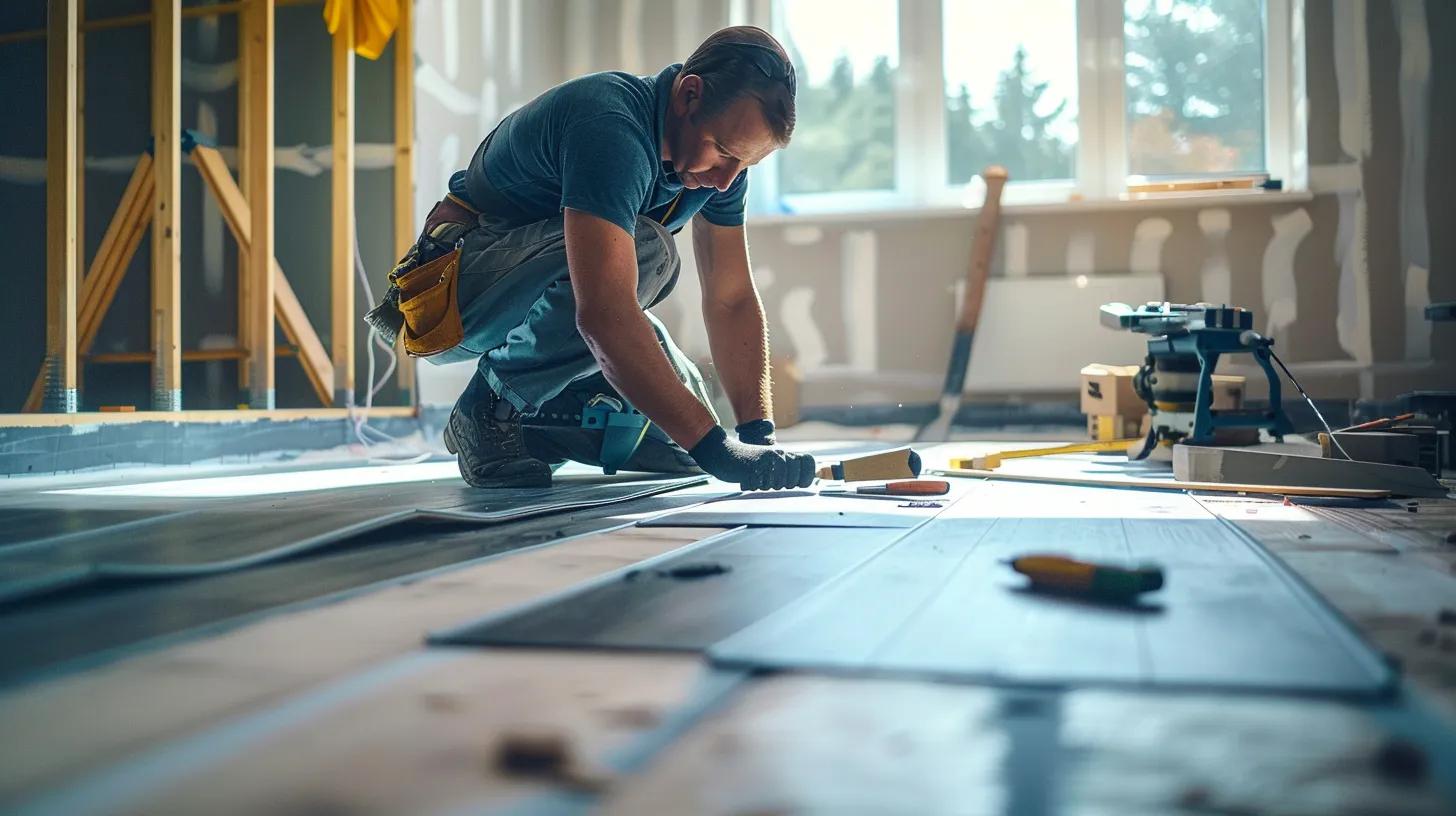
Installing waterproof flooring begins with careful planning and preparation. Homeowners should discuss the project scope, timeline, and material choices with their contractor before work starts. Once plans are in place, professionals move on to subfloor preparation, precise fitting of the chosen flooring type, and final inspection to ensure the installation meets performance and aesthetic standards.
Preparing the Subfloor for Waterproof Flooring
The first step is a thorough inspection of the existing subfloor. Installers check for cracks, uneven sections, or damage that could compromise adhesion. Any issues are addressed through repairs, sanding, or self-leveling compound to create an even surface. In many cases, a moisture or vapor barrier is added to guard against rising damp. This layer helps prevent moisture from below from affecting the new flooring. By taking these steps, contractors ensure the base is stable and ready to support the waterproof material without risk of movement or gaps.
Key Steps for Installing Luxury Vinyl Plank and Laminate
Once the subfloor is prepared, installers lay out the planks to determine the best starting point and pattern. Luxury vinyl plank flooring uses a click-lock system that lets each plank snap into place without adhesive. This method creates tight seams and simplifies future repairs. Waterproof laminate features a similar interlocking design and often includes a built-in underlayment to cushion foot traffic and reduce noise. As workers fit the planks, they leave a small gap at walls and door frames to allow for natural expansion. Finally, trim pieces and baseboards are installed to cover any visible gaps and provide a clean finish.
Installing Sheet Vinyl and Tile
For sheet vinyl, professionals cut large rolls to fit the room’s dimensions, making sure edges align with walls and fixtures. After trimming excess material, seams are heat-welded or sealed with specialized tape to create a continuous waterproof surface. Ceramic or porcelain tile installation involves spreading thinset mortar over the subfloor, laying tiles in a predetermined pattern, and pressing them to the correct height. Once the tiles set, grout is applied between the joints and sealed to block moisture. Both methods demand precision to maintain a seamless barrier against water.
How Long Installation Takes
The duration of the project depends on the flooring type, room size, and subfloor condition. Installing luxury vinyl plank or laminate in an average kitchen or living room often takes one to three days. Sheet vinyl may require a slightly shorter timeframe due to fewer individual pieces. Tile installations generally take longer—up to four days or more—because mortar and grout need time to cure. Contractors provide a detailed schedule so homeowners know when each phase will start and finish.
How Do You Maintain and Care for Waterproof Flooring?
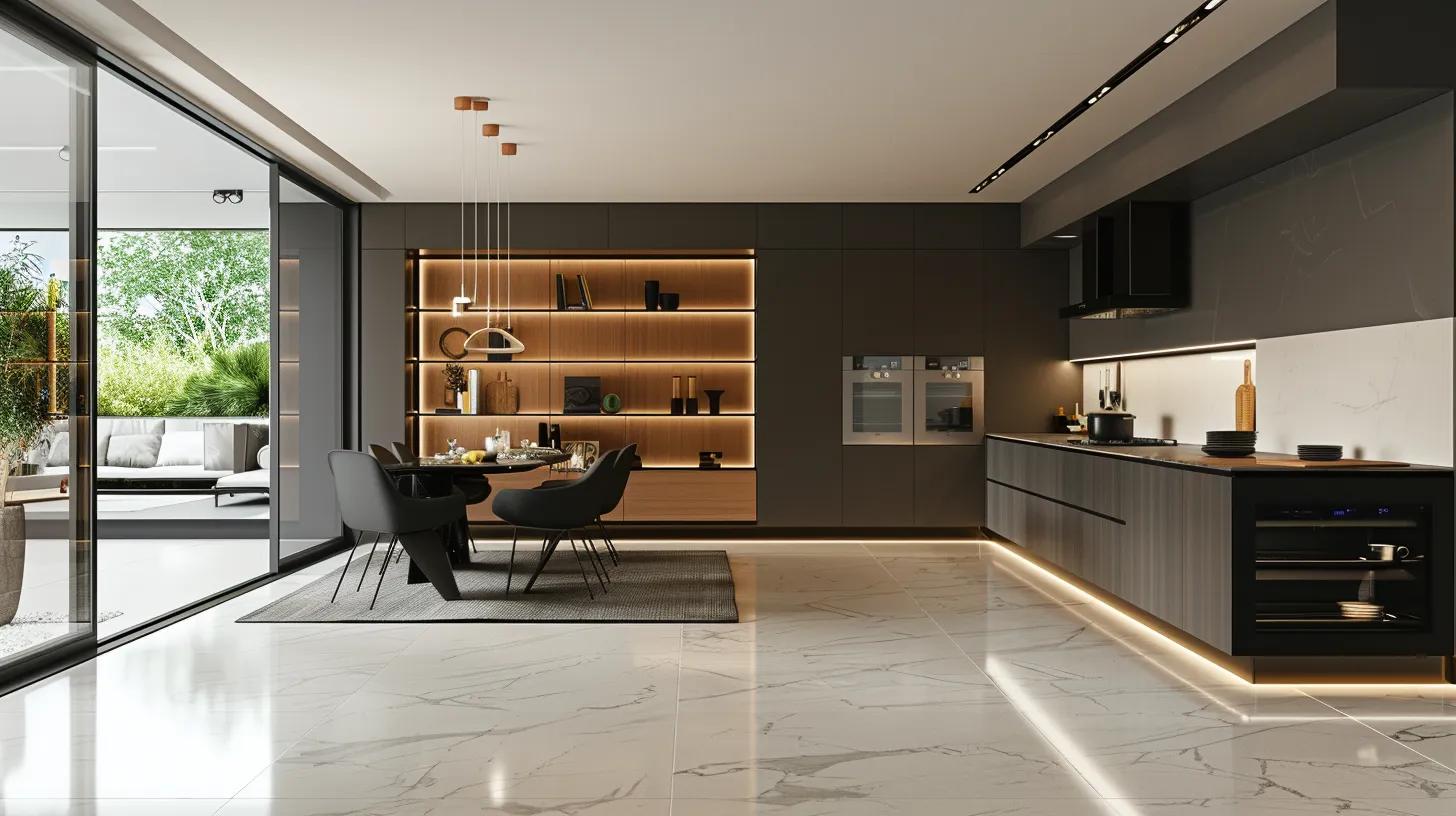
Waterproof flooring stands up well to moisture, but it still needs regular upkeep to stay in top condition. Simple cleaning routines and timely inspections will keep your floors looking new and ensure they continue to protect your subfloor from water damage.
Safe Cleaning Methods for Waterproof Flooring
For daily upkeep, start by removing loose dirt and debris with a soft-bristle broom or a vacuum cleaner set to a hard-floor mode without a beater bar. When deeper cleaning is needed, use a damp mop with a mild, pH-neutral detergent. Avoid ammonia- or bleach-based solutions, since harsh chemicals can wear away the protective layer over time. On tile floors, choose a gentle cleaner formulated for ceramic or porcelain, and rinse thoroughly to remove any residue that could attract dirt. Never use abrasive scrub pads or steel wool, as these can leave scratches that compromise the waterproof surface. If you’re dealing with stuck-on spills, let them soften in warm water before wiping them away, rather than scraping forcefully.
Inspection Schedule to Spot Early Issues
Regular checks help catch small problems before they grow. Once a month, look along seams and around edges for signs of lifting, bubbling, or discoloration. Pay extra attention near sinks, dishwashers, and exterior doors where moisture often collects. In very humid months or after heavy rains, inspect floors every two weeks if you can. Check transition strips and thresholds for gaps where water might sneak underneath. If you spot any loose planks or tiles, take note of the location so you can address it promptly. Keeping a simple log of your inspections will help you track changes over time and decide when it’s time for repairs.
Addressing Minor Repairs Promptly
Small scratches and scuffs on luxury vinyl planks or laminate can often be remedied with a repair kit provided by the flooring maker. These kits typically include color-matched putty or markers that allow the blemish to blend in with the surrounding pattern. In tiled areas, chipped or cracked tiles can be removed and replaced individually without disturbing the rest of the floor. Keeping a few extra planks or tiles in storage ensures exact color and texture matches. Acting quickly prevents water from reaching vulnerable areas and stops minor damage from turning into larger, more expensive problems.
Which Waterproof Flooring Styles and Designs Suit Cumming Homes?
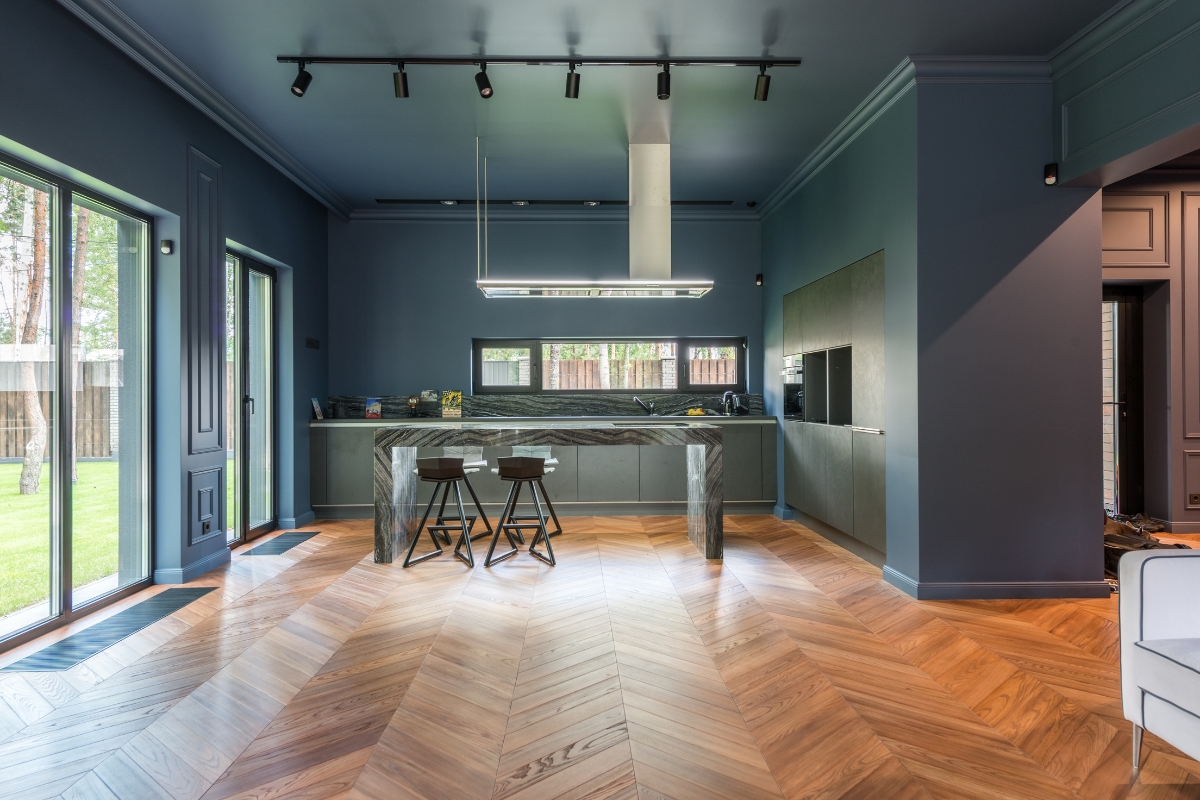
Waterproof flooring no longer means sacrificing style for practicality. Today’s products combine durable, moisture-resistant cores with realistic visuals, giving homeowners in Cumming the freedom to match their interior design without worrying about spills or humidity. Whether you prefer the warmth of timber, the elegance of stone, or a sleek contemporary look, there is a waterproof option to suit every room.
What Flooring Colors and Patterns Are Popular in Cumming?
In Cumming, homeowners often choose neutral palettes that work with a wide range of décor. Warm grays and soft beige planks that resemble weathered oak create a welcoming atmosphere in open-plan living spaces. For a touch of character, many pick hand-scraped textures or lightly distressed finishes that evoke the charm of reclaimed wood.
If you want subtle contrast, stone-look tiles with gentle veining in cream or slate tones add depth without dominating the room. Darker browns and charcoal grays can anchor a space, especially when paired with crisp white trim and minimalist furnishings. Pattern plays a role too: wide planks laid in staggered rows deliver a classic feel, while narrow planks set in a herringbone pattern lend a more modern edge.
How Waterproof Flooring Complements Different Rooms
Room function directly influences style choices. In kitchens and bathrooms, ceramic and porcelain tile remain top picks for their waterproof performance and easy maintenance. Large-format tiles in matte or polished finishes reflect light and make smaller spaces feel larger. Sheet vinyl offers a seamless look, ideal for mudrooms and laundry areas where water often pools.
In living rooms and bedrooms, luxury vinyl plank (LVP) or waterproof laminate brings the look of hardwood — complete with authentic grain and texture — without the risk of warping. These materials feel warmer underfoot than tile and can be installed with underlayments that dampen sound. Basements, which face higher moisture levels, pair well with sheet vinyl or waterproof laminate; both stand up to occasional flooding and can be removed or replaced easily if needed.
Can Waterproof Flooring Mimic Natural Wood or Stone?
Advances in printing and embossing technology let waterproof flooring rival real wood and stone in both appearance and feel. High-definition printing reproduces the fine lines and color variations of oak, maple, or walnut, while multi-layer embossing creates realistic knots and ridges you can feel underfoot. Stone-look vinyl and tile can mimic marble, slate, or travertine complete with natural imperfections and varied shading. Because these materials resist moisture, you get the authentic look without the maintenance headaches of sealing grout lines or refinishing planks. Their versatility means you can mix styles — perhaps pairing wood-look flooring in living areas with tile “rugs” in dining spaces — to create distinct zones within an open floor plan.
What Textures and Finishes Enhance Style and Safety?
Beyond color and pattern, texture influences both appearance and functionality. A lightly embossed finish on porcelain tile offers traction in wet areas, reducing slipping risk while maintaining a smooth look. In wood-look products, matte finishes hide scratches better than high-gloss surfaces and lend a more natural vibe. Some vinyl planks include a hand-applied bevel that simulates the shadow lines of real wood, adding depth to each plank. If your home has radiant-floor heating, choose materials rated for heat transfer; many waterproof laminates and luxury vinyl planks work seamlessly with underfloor heating systems, ensuring comfort without compromising style.
Why Choose Local Experts Like Cumming Home Solutions for Waterproof Flooring?
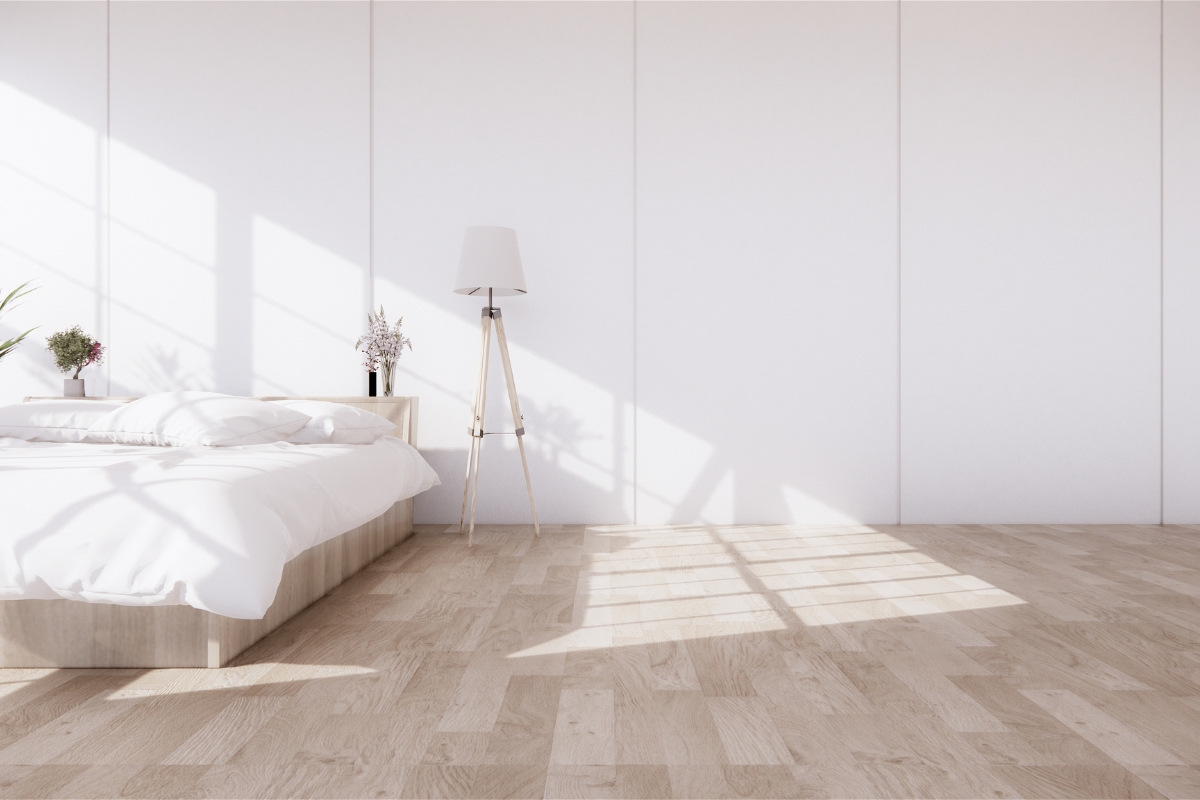
Choosing a local installer for waterproof flooring means working with professionals who know Cumming’s climate inside and out. They understand the swings in humidity and seasonal rain patterns, so they can recommend materials and installation methods that stand up to local conditions. By tapping into regional expertise, homeowners get a floor that not only looks great but also holds up against moisture challenges specific to this area.
Benefits of Professional Installation Services
Professional installers bring a level of precision that DIY approaches often lack. They begin by inspecting and preparing the subfloor, correcting any uneven spots or minor damage before laying down a moisture barrier.
Their experience with waterproof flooring systems ensures that seams lock tightly and edges are sealed correctly, preventing water from slipping below the surface. On top of that, many installers back their work with warranties covering both materials and labor. If an issue does arise, homeowners can count on expert support rather than scrambling to find someone who knows the product.
How Local Climate Knowledge Improves Flooring Choices
Local experts have seen firsthand how out-of-town products fare under Cumming’s warm, humid summers and cooler winters. They can guide homeowners toward flooring types proven to resist swelling, warping, or adhesive failure in this specific environment.
Whether it’s recommending a luxury vinyl plank with a robust waterproof core or a tile with enhanced grout sealing, these professionals match product performance to climate realities. Their insights help avoid costly missteps, such as choosing a floor that looks good on a showroom wall but fails in a real-world setting.
Customer Support and Warranty Options
Reputable local contractors provide more than just installation. They offer pre-installation consultations to discuss long-term upkeep and care, and they walk homeowners through recommended cleaning methods to preserve the waterproof barrier. After the job is done, clients receive detailed instructions on maintaining the floor’s finish and troubleshooting minor issues. Many installers include labor warranties that cover accidental damage during the first year or two, while manufacturers’ guarantees on materials can extend for a decade or more. Having both layers of protection in place means any unexpected problem gets addressed quickly and at no extra cost.
Long-Term Value of Local Expertise
When you hire a nearby specialist, you also benefit from their reputation in the community. Satisfied customers share their experiences through local reviews and word of mouth, giving you confidence in your choice. If you ever need follow-up work—an expansion into another room or a repair after heavy use—your installer is just a short drive away. This ongoing relationship can lead to smoother project planning and potential cost savings on future work. Ultimately, partnering with a local expert turns a one-time installation into a long-term investment in your home’s resilience and comfort.
Frequently Asked Questions
Q: How do I choose the best waterproof flooring material for my Cumming home? A: Choose based on room use, design preference, and budget. For a natural wood look with durability, LVP is ideal. For moisture-prone areas like bathrooms, ceramic tiles or sheet vinyl work best. Consulting local experts helps tailor your choice.
Q: Is waterproof flooring more expensive than traditional flooring options? A: Initially, waterproof options may cost more per square foot, but long-term savings from reduced maintenance, fewer repairs, and enhanced durability make them cost-effective over time.
Q: Can I install waterproof flooring myself, or should I hire a professional? A: While DIY installation is possible, professional installation ensures proper subfloor preparation and technique, preserving waterproof integrity and offering warranties and post-installation support.
Q: How often should waterproof flooring be replaced? A: With proper care, high-quality waterproof flooring can last 15 to 30 years. Regular inspections and timely repairs help extend its lifespan, reducing the need for full replacement.
Q: What specific features should I look for to ensure a flooring product is truly waterproof? A: Look for a sealed wear layer, a water-resistant core, and installation methods like click-lock systems or quality adhesive bonding. Manufacturer certifications and warranties also provide assurance of water resistance.
Q: Does waterproof flooring add value to my home? A: Yes, it’s highly appealing to buyers. Its durability, low maintenance, and attractive appearance contribute to higher resale values and a superior living environment.
Q: Are there any health benefits associated with choosing waterproof flooring? A: By preventing moisture buildup, waterproof flooring reduces mold and mildew risks, which improves indoor air quality and benefits those with allergies or respiratory sensitivities.
Final Thoughts
When it comes to safeguarding your Cumming home against spills, humidity, and everyday wear, choosing the right waterproof flooring is key—and Diaz Hardwood Floors has the expertise to guide you every step of the way. From luxury vinyl planks to engineered wood options that stand up to moisture without sacrificing style, our team is ready to help you find the perfect flooring for your lifestyle and budget. Ready to transform your floors into a worry-free, beautiful surface? Call Diaz Hardwood Floors today at 404-791-0444 or visit our site to schedule your free estimate—and take the first step toward a home that looks great and stays protected.

